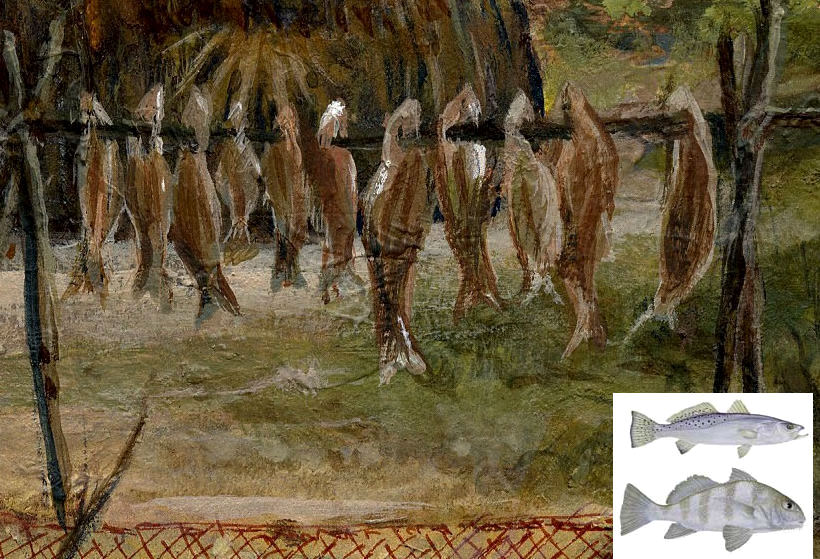
Fish was a mainstay in the diet of coastal peoples. In addition to providing meals during stays at the camp, fish could be dried in great quantities, providing a supply of protein for lean months. An account by 17th-century French navigator Beranger notes that in one large Karankawa shoreline camp, the fish are “dried without salt and where worms prevail in large numbers,” Worms and insects were eaten along with the fish, providing a shot of extra protein. Bones of black drum, red drum, spotted sea trout and Atlantic croaker have been found in great quantities in archeological sites, an indication of the importance of fish in the native diet. Based on seasonality analyses of fish otoliths (a small bone in the inner ear), researchers believe that native peoples occupied these coastal “fishing camps” primarily during the fall and winter months. During these cooler seasons, certain species of fish could be harvested in great quantities in narrow tidal passes between barrier islands as they migrated to the deeper waters of the Gulf.